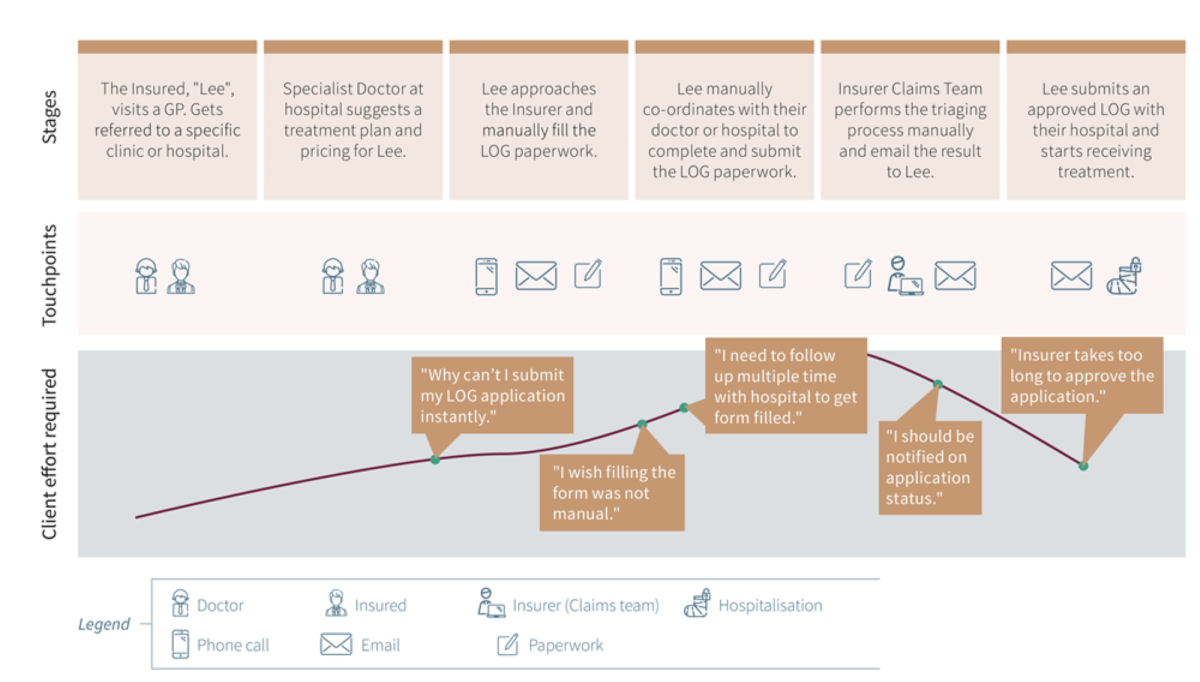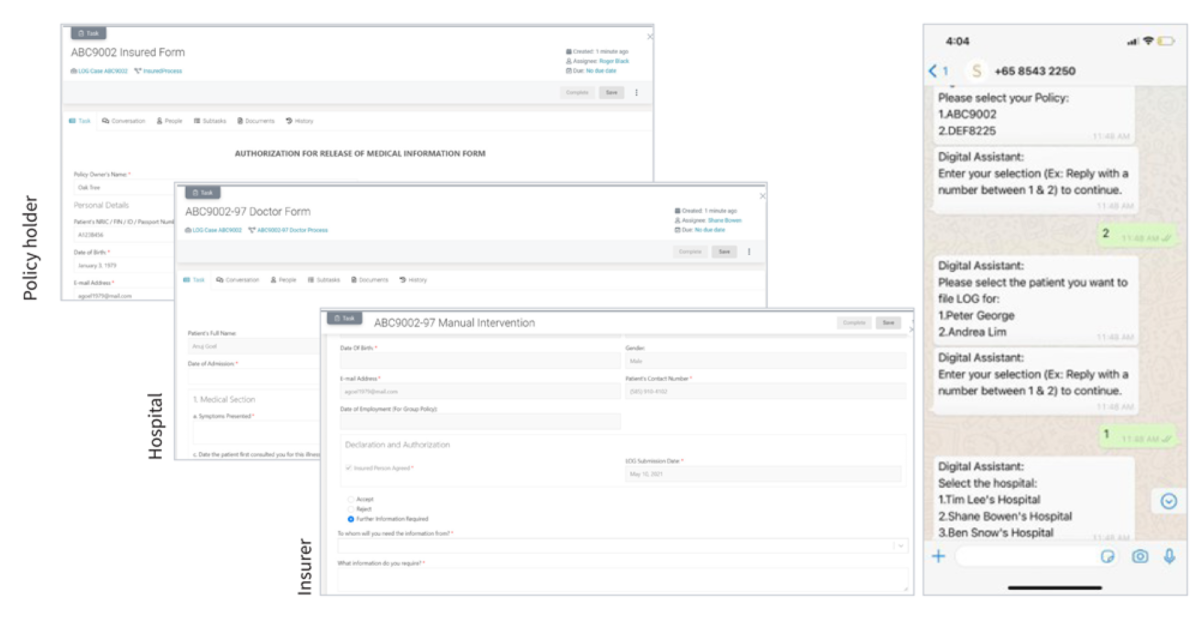Insurers are at the centre of a storm of changing market environments. Technology challengers entering the market in recent years have raised the bar with products and services focused on customer centricity, speed, and flexibility, often offering convenient, fast, and personalised alternatives to what traditional insurers have in store.
While it is commonly acknowledged that digitalisation is the way to go, not all insurance companies are digital-ready yet. Insurance companies face many challenges in achieving their digital strategy due to the complexity of business processes and cases, coupled with government-regulated compliance rules.
Consumers, however, will not wait for your organisation to keep up with their demands. It is critical for insurers to meet the mounting and rapidly shifting customer expectations quickly and swiftly. How, then, can insurers do that? By identifying quick wins areas, such as shifting traditional insurance processes to paperless and efficient next-generation business models that eliminate tedious and time-consuming manual tasks. The implementation of digital solutions, such as Synpulse's could result in a significant reduction in full-time equivalents (FTEs).
Why the need for digitalisation?
Although typically found at the end of the insurance value chain, the claims process — an often-arduous paper-based process — is arguably the most important customer moment of truth, as it has a major impact on brand reputation, customer experience, and retention.
A Qualtrics report in 20191 highlighted the correlation between better user experience and higher customer loyalty, which translates to a higher likelihood of a customer purchasing more, forgiving bad experiences, and recommending the company to others. This proven correlation reinforces the belief that insurers need to speed up the digitisation of their services — especially within the claims journey — to create a smooth experience that keeps their customers happy.
The case for digitisation: Letter of Guarantee
Some may say that obtaining a Letter of Guarantee (LOG) – under health claims – is one of the most tiresome processes. As an assurance of payment by insurers to hospitals on behalf of the patient, the LOG allows policyholders to obtain a waiver of any upfront cash payment required by the hospital at the time of admission, or before starting the treatment, as it guarantees that the hospital bill (or part of it) will be covered by the insurance company.
However, getting a LOG from the insurer can often be an unpleasant experience for the customer. Here’s why:
- Cumbersome interactions
Multiple players (i.e., the insurer, hospital, and the insured) interacting with each other in a frictional ecosystem causes a sub-optimal experience. - Time consuming
Poorly aligned incentives result in a time-consuming and expensive experience for major parties. Depending on the market, the digital maturity of the insurer, and the availability of information, the LOG processing can take a few days, or even up to a few months. - Lack of digitisation
Paper-based processes and ineffective communication channels with very minimal automation do not meet the current expectations of a highly digitalised society. - High admin costs
Every stakeholder must maintain their own records and complete the administrative work associated with them. In most instances, delays are caused because of the lack of supplementary information on the insurer’s side. It takes insurers up to six hours to process a single LOG claim application.
The solution: a digital and automated LOG processes platform
Insurers today need to go beyond providing traditional services. Constantly studying and understanding how society is evolving is crucial in identifying and meeting the changing customer needs in a digital world.
In the case of the LOG, the existing sub-optimal process presents an opportunity for insurers to craft a distinctive value proposition by designing a digital and integrated LOG processing platform.
An automated LOG (ALOG) platform designed with an in-depth understanding of the trends and challenges can be woven seamlessly into the journey of all parties. In the process, adaptable features will be incorporated to create and embed a “gold standard” experience by harnessing the power of digital.

By adopting a digitised ALOG platform, insurers can benefit from:
- Connected claims paradigm
Creating an integrated digital platform connects the insured, hospital, and insurer together, making the process easier, seamless, transparent, and compliant for everyone, thus removing the need for existing tedious interactions. - Automated triaging
The use of embedded machine learning and rule-based algorithms within the platform reduces a substantial amount of work for claims processing teams and has a direct positive impact on turn-around time for the insured. - Digital data exchange
Replacing all paper-based forms and documentation with digital forms will lead to more effective data storage and exchange between the involved parties. Exchanging data smoothly and securely between the various stakeholders creates more consistent and cost-effective processes.
With these benefits, the adoption of a digital ALOG platform, such as Synpulse's, can result in an estimated 30% to 50% of FTEs saved from your organisation's existing baseline setup.
Synpulse digital ALOG solution

The key to successful digital adoption: ensuring a frictionless integration
A hurdle that insurers face when digitising their systems comes in the form of integrating new platforms into existing legacy systems. Coupled with complex business processes, cases, and constantly changing regulations, finding the right solution can be tricky. Leveraging the right ecosystem of platforms to meet the best practices covered earlier in this article can be one such way to ensure frictionless integration.
Above all, insurers must be ready to take advantage of the tools and resources available to not only continue surviving, but also evolve to seize new opportunities in this highly digitised world.

